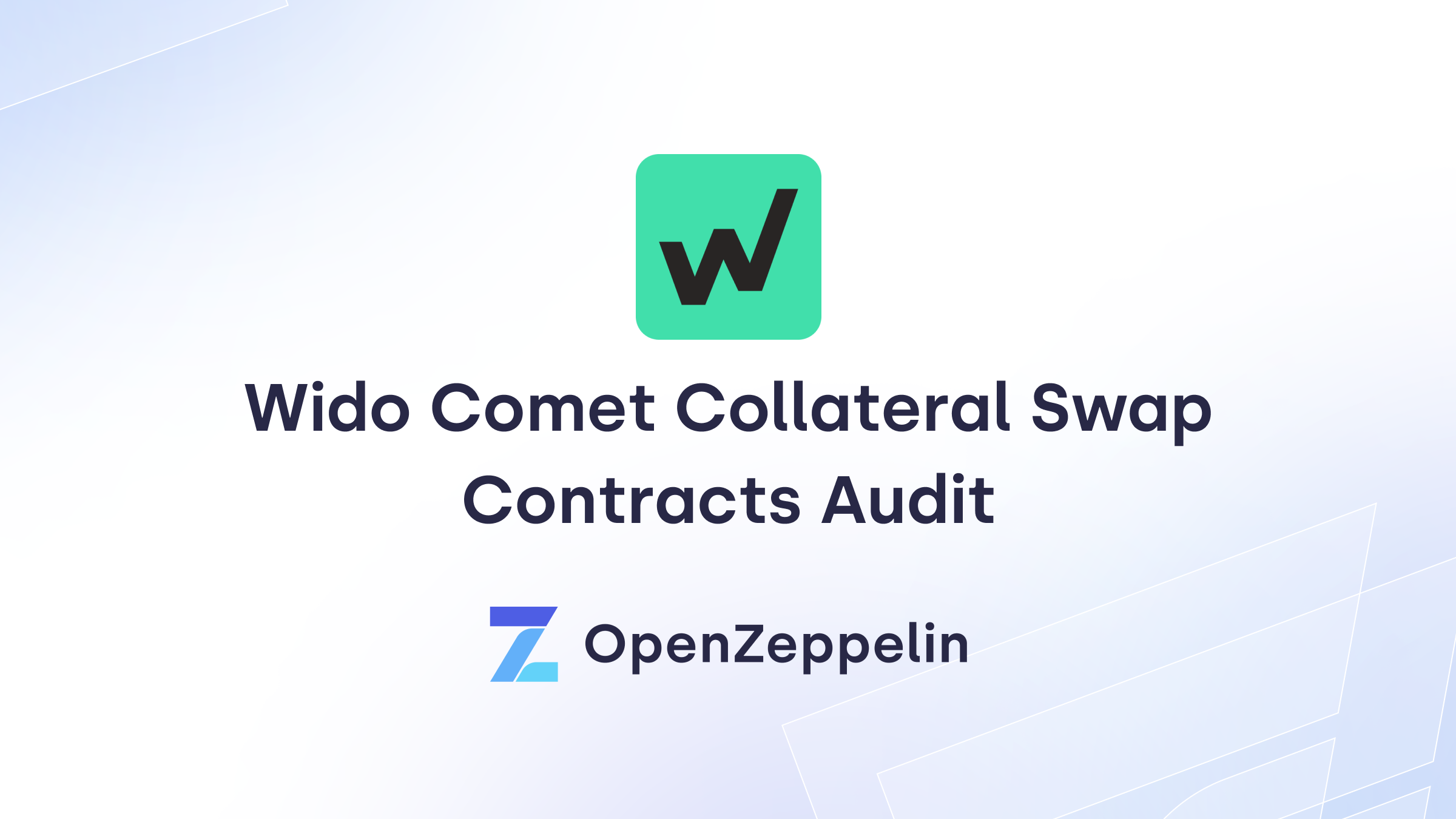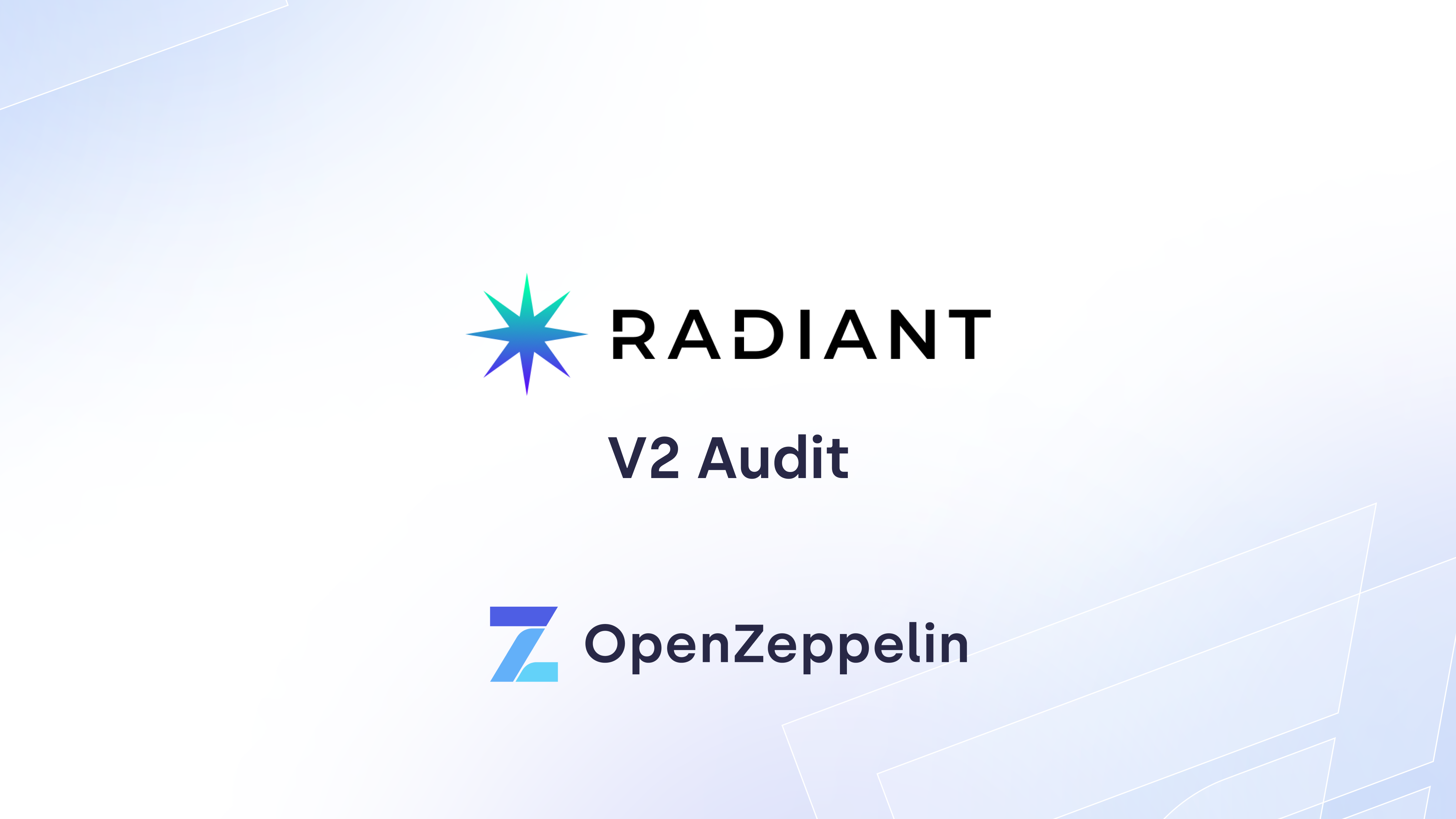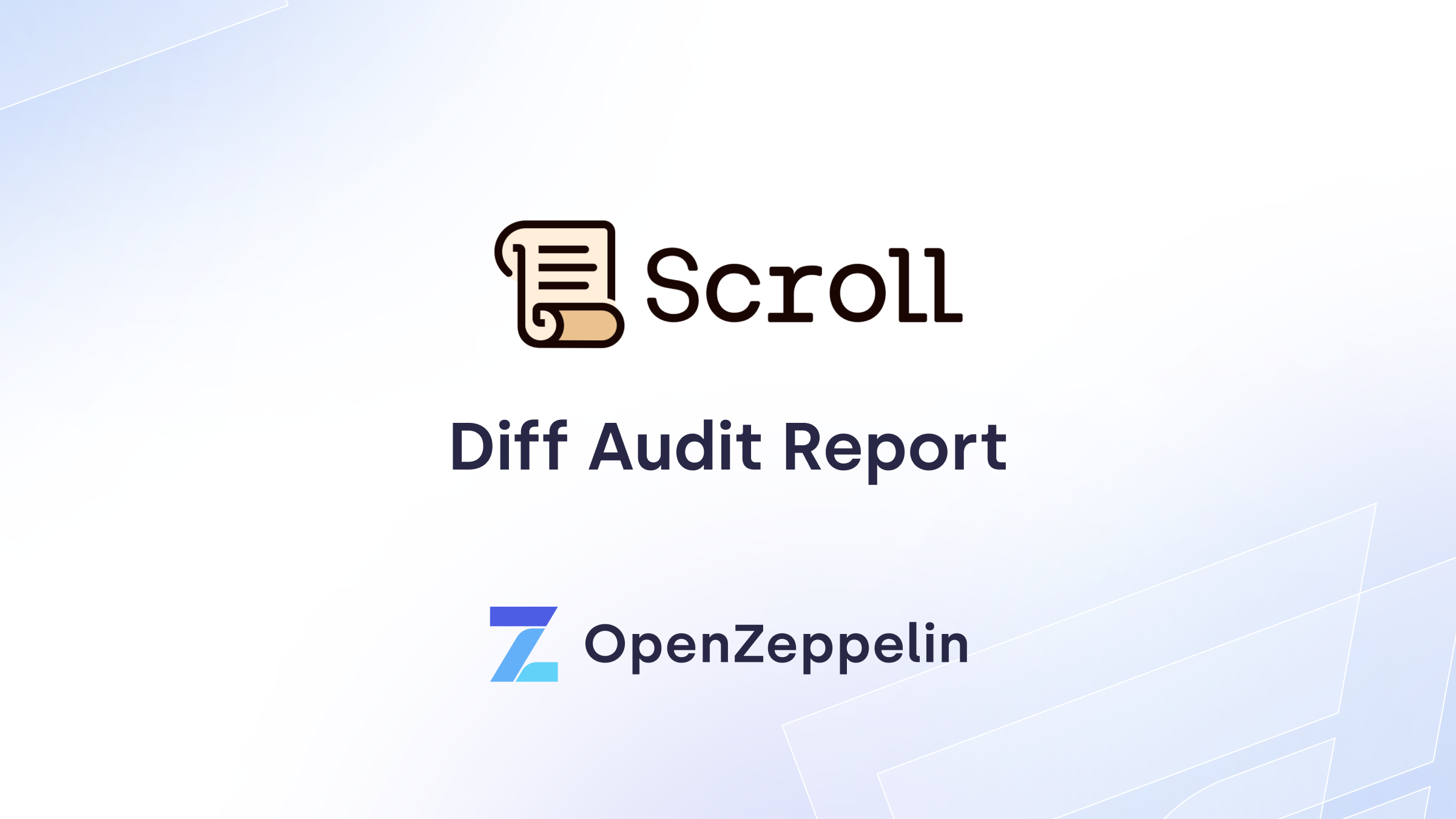Table of Contents
Summary
- Type
- DeFi
- Timeline
- From 2023-10-02
- To 2023-10-03
- Languages
- Solidity
- Total Issues
- 11 (5 resolved)
- Critical Severity Issues
- 1 (1 resolved)
- High Severity Issues
- 0 (0 resolved)
- Medium Severity Issues
- 0 (0 resolved)
- Low Severity Issues
- 4 (3 resolved)
- Notes & Additional Information
- 6 (1 resolved)
Scope
We audited the Exactly protocol repository at commit 1dfca20.
In scope was the following contract:
contracts
└── periphery
└── EscrowedExa.sol
System Overview
The EscrowedEXA contract is an ERC-20 token contract that allows users to mint esEXA tokens in exchange for EXA tokens. The esEXA tokens are not transferrable and esEXA holders have the option to redeem these tokens for the underlying EXA tokens, subject to a vesting period configured by the protocol administrators. To initiate the vesting process, users must lock up a portion of their EXA tokens as a reserve, with the reserve amount being a percentage of the total vesting amount.
Vesting is orchestrated through an external protocol called Sablier, which establishes a dedicated stream for the user's vesting, linearly releasing EXA tokens to the user over time. Users retain the ability to cancel the vesting at their discretion, triggering the withdrawal of all vested EXA tokens from Sablier. Any unvested tokens are returned to the EscrowedEXA contract, where corresponding esEXA tokens are minted and provided to the user.
This mechanism guarantees that the exclusive path for the users to retrieve locked EXA tokens from the EscrowedEXA contract is by adhering to the stipulated vesting schedule.
Privileged Roles
The EscrowedEXA contract implements the following privileged roles:
- The
DEFAULT_ADMIN_ROLEcan change the vesting period and modify the reserve ratio. - The
TRANSFERRER_ROLEis the only role that allows transferringesEXAtokens. - The
REDEEMER_ROLEhas the authority to instantly exchangeesEXAtokens forEXAtokens, bypassing the need for the vesting process.
Trust Assumptions
- The
EscrowedEXAcontract heavily relies on Sablier protocol to allow users to redeem the lockedEXAtokens. The Sablier protocol is trusted to behave according to its specification. - The holders of
DEFAULT_ADMIN_ROLEandREDEEMER_ROLEare expected to be non-malicious and act in the protocol's best interest.
Critical Severity
Unrestricted Minting of esEXA Tokens
The EscrowedEXA contract does not verify the origin or the asset of the Sablier stream expected to be canceled. Cancellation can happen through EscrowedEXA's cancel function or directly through the Sablier protocol. Depending on what was set as stream.sender and stream.recipient, the onStreamCanceled hook will be called by Sablier's smart contracts. This leads to a scenario where an attacker can create a vesting stream directly through the Sablier protocol and then force its processing via the EscrowedEXA contract, resulting in the minting of esEXA tokens to the attacker, without the corresponding EXA tokens reaching the EscrowedEXA contract.
There are two exploitation scenarios that start with the attacker deploying a bogus ERC-20 token.
In the first scenario, a malicious stream is created with the attacker set as the sender and the EscrowedEXA contract set as the recipient. Upon the attacker canceling the stream directly through Sablier, the onStreamCanceled function is invoked, allowing the attacker to mint esEXA tokens. This scenario is also possible if the roles are reversed, with the attacker set as the recipient and the EscrowedEXA contract set as the sender.
The second scenario involves creating a stream with the EscrowedEXA contract set as the sender and the attacker as the recipient. Calling the cancel function of the EscrowedEXA contract results in the minting of esEXA tokens.
Consider adding a mapping that identifies streams created by the EscrowedEXA contract. Upon cancellation, verify the streamId in the cancel function and the onStreamCanceled hook, ensuring that only the streams created by the EscrowedEXA contract are processed successfully.
Update: Resolved in pull request #672 at commit 0182437.
Low Severity
Missing Docstrings
Within EscrowedEXA.sol, there are several parts that do not have docstrings. For instance:
- Line 189: the
clockfunction. - Line 194: the
CLOCK_MODEfunction. - Lines 211 to 225: the entire
ISablierV2LockupLinearinterface.
Consider thoroughly documenting all functions (and their parameters) that are part of any contract's public API. Functions implementing sensitive functionality, even if not public, should be clearly documented as well. When writing docstrings, consider following the Ethereum Natural Specification Format (NatSpec).
Update: Resolved in pull request #676 at commit 9a29592.
User May Commit To Vesting Terms They Did Not Anticipate
The EscrowedEXA contract enables users to initiate the vesting process through the vest function, allowing them to retrieve EXA tokens. To begin this process, users are required to provide a reserve amount of EXA tokens, which subsequently triggers the creation of a Sablier stream for the specified vesting period. It is important to note that the reserveRatio and vestingPeriod parameters can be modified by an administrative account at any time.
The issue arises from the uncertainty faced by users when initiating the vesting process, as they cannot be certain of whether the reserveRatio or vestingPeriod will remain the same when their transaction is included in a block. If the administrator modifies the reserveRatio or vestingPeriod parameters and their transaction is executed before the user's vesting, the user may inadvertently commit to vesting parameters that they did not anticipate.
Consider adding expectedReserveRatio and expectedVestingPeriod parameters to the vest function. If the values of these parameters differ from the actual reserveRatio and vestingPeriod, the transaction should revert, ensuring that users are not bound to vesting parameters they did not expect.
Update: Resolved in pull request #673 at commit ef251d3.
Lack of Input Validation
The EscrowedEXA contract implements two administrative functions that miss input validation:
- The
setVestingPeriodfunction updates the vesting period. Consider adding a check to restrict it to reasonable values. - The
setReserveRatiofunction updatesreserveRatio. Consider restricting it, as a value that is too high would require considerable reserves to be deposited in order to start vesting.
Update: Acknowledged, not resolved. The Exactly team stated:
We believe it is difficult to see what is a valid range for it beforehand which will not leave us too limited in the future. At the same time, the check could also bring a false sentiment of safety.
Incorrect Initialization of ERC20Permit
In the OpenZeppelin Upgradeable contracts, unchained functions are used to mitigate potential double initialization problems. However, because of the simple inheritance structure in the EscrowedEXA contract, double initialization is not a concern in the current implementation.
Using __ERC20Permit_init_unchained instead of __ERC20Permit_init is not necessary, and leaves the EIP712Upgradeable contract's name and version uninitialized. This is not consistent with the EIP-712 domain separator specification, and will lead to issues when integrating with signatures that fully comply with EIP-712.
Consider using the __ERC20Permit_init function in order to correctly initialize the EIP-712 domain separator.
Update: Resolved in pull request #674 at commit 1725765.
Notes & Additional Information
Missing Named Parameters in Mapping
Since Solidity 0.8.18, developers can utilize named parameters in mappings. This means mappings can take the form of mapping(KeyType KeyName? => ValueType ValueName?). This updated syntax provides a more transparent representation of the mapping's purpose.
Consider adding named parameters to the reserves mapping in the EscrowedEXA.sol contract to improve the readability and maintainability of the codebase.
Update: Acknowledged, will resolve. The Exactly team stated:
The team will work on this soon, but for now, we need to keep using the same Solidity version that we are using in the rest of the contracts.
Lack of Security Contact
Providing a specific security contact, such as an email or ENS, within a smart contract significantly simplifies the process for individuals to communicate if they identify a vulnerability in the code. This practice proves beneficial as it permits the code owners to dictate the communication channel for vulnerability disclosure, eliminating the risk of miscommunication or failure to report due to a lack of knowledge on how to do so. Additionally, if the contract incorporates third-party libraries and a bug surfaces in these, it becomes easier for the creators of those libraries to make contact, inform the code owners about the problem, and provide mitigation instructions.
The EscrowedEXA contract does not have a security contact.
Consider adding a NatSpec comment with a security contact, on top of the contract definition. Using the @custom:security-contact convention is recommended as it has been adopted by the Openzeppelin Wizard and the ethereum-lists.
Update: Acknowledged, not resolved. The Exactly team stated:
We believe our channels and bug bounty programs are public enough if someone wants to reach us.
Unused Named Return Variable
Named return variables are a way to declare variables that are meant to be used within a function's body for the purpose of being returned as the function's output. They are an alternative to explicit in-line return statements.
In EscrowedEXA contract, the streamId return variable for the vest function is unused.
Consider either using or removing any unused named return variables.
Update: Acknowledged, not resolved. The Exactly team stated:
This is a style choice that we believe makes the function more readable.
Typographical Error
Consider addressing the following typographical error:
- Line 130 should say
recipientinstead ofrecepient.
Update: Resolved in pull request #675 at commit 61efaf9. The Exactly team stated:
We removed the internal function where the NatSpec had a typographical error.
Improper Use of assert
In the EscrowedEXA contract, there are several instances where assert is used to validate certain conditions: lines 68, 78, 88, 134, 149 and 170.
Generally, assert is used to test system invariants, while require is used to check return values or validate inputs. Moreover, if a transaction reverts because of assert, no leftover gas is returned to the caller, potentially resulting in a negative user experience.
Consider replacing the above occurrences of assert with require.
Update: Acknowledged, not resolved. The Exactly team stated:
This is not true, after solidity 0.8.
assertno longer consumes all caller gas. It is also a style choice, and we are being consistent with the rest of the contracts in the protocol.
Code Is Not Fully Consistent With Solidity Style Guide
There are several occurrences where the Solidity style guide is not followed, which makes the code more error-prone and difficult to read:
- The
withdrawMaxfunction is internal and its name should start with an underscore_. - The order of functions within the contract should start with the
constructor, followed byexternal,public,internal, andprivatefunctions at the end. - Consider adjusting the layout of the
EscrowedEXA.solfile by declaring theISablierV2LockupLinearinterface and defining top-level structs before theEscrowedEXAcontract implementation.
To increase the overall readability of the codebase, consider following the Solidity style guide.
Update: Acknowledged, not resolved. The Exactly team stated:
This is a style choice, we are being consistent with the rest of the contracts in the protocol.
Conclusion
A critical vulnerability was identified early on in this audit and was immediately disclosed to the Exactly team. Communication with the Exactly team was smooth and efficient. They provided us with timely answers to our questions and diligently started working on the findings as soon as they were sent over.


